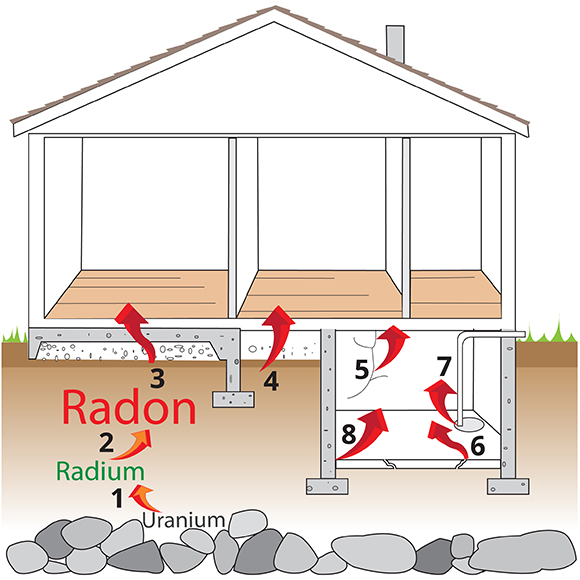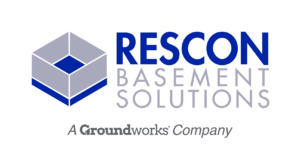Understanding Radon in Your Home
Apr 26, 2024
Understanding Radon in Your Home
Are you familiar with the silent intruder that could be lurking in your home, affecting the health of your loved ones without you even knowing? Unveiling the mysteries of radon – a colorless, odorless gas that can seep into your living spaces and pose serious health risks. Join us on a journey to understand radon in your home and discover actionable steps to ensure a safe environment for you and your family. Let’s dive in! Contact Rescon Basement Solutions today!
Impact of Radon on Health
Radon, a radioactive gas formed naturally by the breakdown of uranium in soil and rocks, can enter homes through cracks in foundations, walls, and other openings. Once inside, it becomes trapped and can accumulate to dangerous levels.
Exposure to elevated radon levels over time is linked to an increased risk of lung cancer. In fact, radon is the second leading cause of lung cancer after smoking. The risk is higher for smokers who are also exposed to high radon concentrations.
Long-term exposure to radon gas damages lung cells’ DNA directly when inhaled, increasing the likelihood of mutations that can lead to cancer development. The alpha particles released during the decay process can harm lung tissue and potentially trigger cancerous growths.
Symptoms of radon exposure may not be immediately noticeable since it typically takes years for health issues like lung cancer to develop. This silent threat underscores the importance of testing your home’s radon levels regularly.
Protecting yourself from the harmful effects of radon starts with awareness and proactive measures. By understanding how this invisible danger impacts health, you empower yourself to take necessary precautions and safeguard your well-being.
Stay tuned as we delve into why testing for radon levels is crucial in ensuring a healthy living environment free from potential risks associated with this hazardous gas.
Importance of Testing for Radon Levels
Radon, a colorless and odorless gas, can seep into your home without you even knowing it. It is crucial to understand the importance of testing for radon levels in your living space to ensure the safety of you and your loved ones.
Testing for radon is essential because prolonged exposure to high levels of radon gas can have serious health implications. Radon is the second leading cause of lung cancer after smoking, making it a significant concern for homeowners.
The only way to know if your home has elevated radon levels is by conducting a simple test. Radon testing kits are readily available at hardware stores or through professional services. These tests are easy to use and provide valuable information about the radon levels in your home.
Regularly testing for radon allows you to monitor any fluctuations in levels over time. Even if previous tests showed low levels of radon, it’s crucial to retest periodically as conditions underground can change, affecting radon infiltration into your home.
Knowing the radon levels in your home empowers you to take necessary steps to mitigate any risks associated with high concentrations of this harmful gas. By being proactive about testing for radon, you can create a safer environment for yourself and those around you.
Don’t underestimate the importance of testing for radone; it could ultimately save lives!
Radon Reduction Techniques
Radon reduction techniques are crucial for maintaining a healthy indoor environment. One effective method is called soil suction, where a vent pipe and fan are used to draw radon gas from beneath the foundation of the home and vent it outside. This technique helps prevent radon from entering the living spaces.
Another common approach is sealing cracks in floors and walls to reduce the entry points for radon gas. By properly sealing these openings, you can limit the amount of radon that seeps into your home. Additionally, improving ventilation in basements and crawl spaces can help dilute any accumulated radon gas.
For homes with high levels of radon, installing a heat recovery ventilator (HRV) or energy recovery ventilator (ERV) can be beneficial. These systems bring in fresh air from outside while expelling stale indoor air, helping to reduce radon concentrations indoors.
It’s also essential to ensure proper airflow throughout your home by opening windows regularly and using exhaust fans in areas like kitchens and bathrooms. By promoting good ventilation, you can lower the concentration of radon inside your living spaces.
Consulting with a professional radon mitigation specialist is recommended if you suspect elevated levels of this harmful gas in your home. They can assess your property’s unique characteristics and recommend tailored solutions to effectively reduce radon levels.
Actionable Steps for Dealing with Elevated Radon Levels
If you discover that your home has elevated radon levels, there are several actionable steps you can take to mitigate this health risk. It’s crucial to first consult with a professional radon mitigation specialist who can assess the situation and recommend the best course of action for your specific circumstances.
One common method for reducing radon levels in homes is through active soil depressurization. This technique involves installing a vent pipe system and fan to draw radon gas from beneath the foundation and safely expel it outside. Sealing cracks in floors and walls can also help prevent radon from entering your home.
Regular monitoring of radon levels after mitigation is essential to ensure that the measures taken are effective in reducing exposure risks. Remember, addressing elevated radon levels is an investment in your family’s health and well-being.
By taking proactive steps to address elevated radon levels, you can create a safer indoor environment for yourself and your loved ones. Don’t wait until it’s too late – prioritize testing and mitigation efforts to protect against this invisible threat lurking in your home. Contact Rescon Basement Solutions today!

